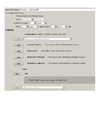PCMH3B: Difference between revisions
| Line 9: | Line 9: | ||
NCQA says you may identify children and youth with special health care needs who are defined by the U.S. Department of Health and Human Services Maternal and Child Health Bureau (MCHB) as children “who have or are at risk for chronic physical, developmental, behavioral or emotional conditions and who require health and related services of a type or amount beyond that required generally.” (Bright Futures: | NCQA says you may identify children and youth with special health care needs who are defined by the U.S. Department of Health and Human Services Maternal and Child Health Bureau (MCHB) as children “who have or are at risk for chronic physical, developmental, behavioral or emotional conditions and who require health and related services of a type or amount beyond that required generally.” (Bright Futures: | ||
Guidelines for Health Supervision of Infants, Children, and Adolescents, American Academy of Pediatrics, 3rd Edition, 2008, p. 18.) | Guidelines for Health Supervision of Infants, Children, and Adolescents, American Academy of Pediatrics, 3rd Edition, 2008, p. 18.) | ||
'''Note: A sample of the patients identified as high risk or complex will be included in the medical record review required for Elements C and D, and for PCMH 4, Element A.''' | |||
{| border = "1" | {| border = "1" | ||
Revision as of 19:37, 25 March 2013
To identify high-risk or complex patients, the practice:
3.B.1 Establishes criteria and a systematic process to identify high risk or complex patients
For this element, you need to document specific criteria considered to be complex or high-risk and a process you would go through to identify patients with these complex or high-risk medical conditions.
NCQA says you may identify children and youth with special health care needs who are defined by the U.S. Department of Health and Human Services Maternal and Child Health Bureau (MCHB) as children “who have or are at risk for chronic physical, developmental, behavioral or emotional conditions and who require health and related services of a type or amount beyond that required generally.” (Bright Futures: Guidelines for Health Supervision of Infants, Children, and Adolescents, American Academy of Pediatrics, 3rd Edition, 2008, p. 18.)
Note: A sample of the patients identified as high risk or complex will be included in the medical record review required for Elements C and D, and for PCMH 4, Element A.
